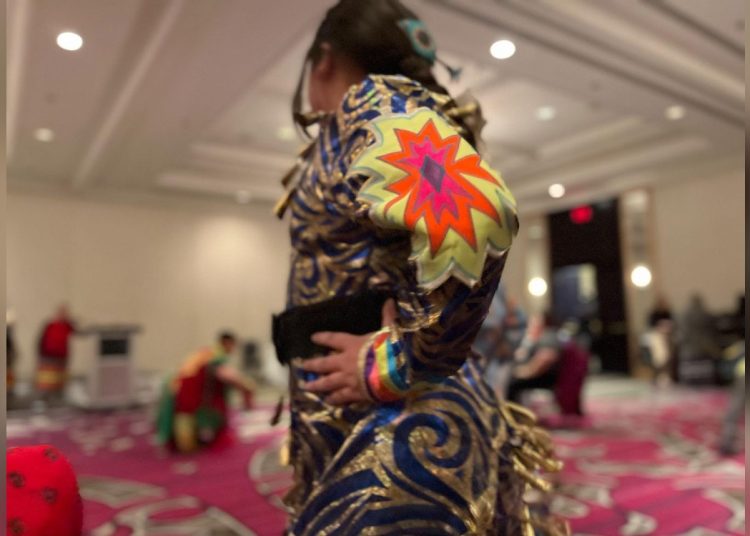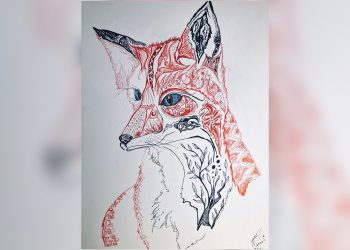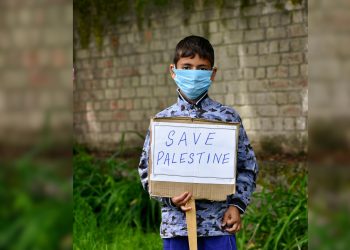Editor’s note: This article was originally written in February 2023 when the Midwinter Celebrations took place. The NB Media Co-op is publishing it now to mark Indigenous History Month, a time to learn about the unique cultures, traditions and experiences of First Nations, Inuit and Métis people.
The Wabanaki Midwinter Celebrations commemorate the winter as a time of restoration, fellowship, and acknowledgement of the Earth’s cycles.
Unfolding from February 3 to 5, the celebrations involved a series of events at St. Thomas University (STU), the University of New Brunswick, and the Delta hotel that were open to students, faculty, the general public, and Wabanaki communities.
Miigam’agan, Elder-in-residence at STU from Lobster Clan, describes midwinter as a time when “life is strongest,” with the Earth understood as a deity carrying unborn life. Celebrations are a “huge coming together.”
“It’s understood as a time of great life… We’re talking about (Mother Earth) as a goddess or a female deity carrying life, gestation,” says Miigam’agan. “We come together and pay homage to the life within… we speak kindly to the life inside, and express our gratitude and love, and prepare for the great arrival and the celebrations – honouring the life inside the womb of our Mother Earth.”
The events are a way of “maintaining a relationship with all of life.” They involve the lighting of the sacred fire, sunrise ceremonies, talking circles, cultural teachings, and communal meals.
Miigam’agan considers the lighting of the sacred fire as especially meaningful. She shares that the time of the lighting – sunset – acknowledges how the moon bestows guidance and nourishment, while the cold season brings a reminder of how interconnected the natural world is and how we might sustain those relationships.
“It amplifies our love for each other,” says Miigam’agan. “Out there in the cold by the fire is such a profound place to be in this below zero temperature — there’s such a gratitude for fire.”
She encourages non-Indigenous communities to come to the celebrations with “great curiosity, and friendship, and in spirit of peace.”
***
Leanne Hudson is a fourth year Indigenous student at STU who helped prepare the celebrations.
She shares that noticing the winter helps her “slow down” and acknowledge that everyone needs rest.
“I do feel some of the weight of winter — the days are shorter, they’re darker. I do relate to the idea that… all things need a break in order to exist again,” says Hudson. “I have grown an appreciation for this midwinter period where we do see everything die off and be covered by snow or ice as a way to symbolize how things have to rest at some point. And we too need to rest up at some point.”
Hudson resonates most with the talking circles, describing them as powerful events filled with knowledge sharing. The circles begin with themes and questions that are guided by expert knowledge-keepers, then organically become an open space where any kind of dialogue can flourish. This year, some of the talking circles focused on two-spiritedness, origin stories, healing traditions, and language revitalization.
“Pretty much every talking circle that I’ve been part of has been powerful and usually hopeful and inspiring – all these nice feelings,” says Hudson. “Anything can happen in a circle. They take shape based on who is in the circle, and it can be in the most expected or unexpected ways.”
Hudson shares that the event was set up by a group of professionals, volunteers, students, and faculty across the New Brunswick Community College (NBCC), UNB, STU, and local community groups, with funding from some government organizations. She helped with coordinating spaces at STU, catering, and promoting the event. She describes the event’s culmination as a “team effort,” and considers the involvement of non-Indigenous people to have been “a highlight.”
“It’s been a really big team effort. We’re seeing this massive network of people come together to make a huge event possible and share the load,” says Hudson. “It’s not just Indigenous people who are planning the event. It’s also non-Indigenous people kind of stepping up and making sure that the event is possible and that everything goes smoothly. It’s a real sign of reconciliation, I think.”
***
On Saturday, February 4, a talking circle on language revitalization was led by Lisa Perley-Dutcher from the Crow and Wolf Clan.
Comprised of twelve people, everyone spoke in turn as a feather was passed through the circle with traditional words honouring the ancestors.
In the circle, people shared how each language builds a unique worldview that cannot thrive when translated; how emotional blocks too large and deep to be explained restrained their teaching and learning of Wolastoqiyik; how deliberate the eradication of their language was; how it is incredible that any speakers survived; how Indigenous children today are starting to speak again.
“For the ones who are not yet born — those are the ones we are thinking about as we sit here and talk about these things,” says Perley-Dutcher. “We know we can’t do it all, there’s too much, the work is too grand. But if we can get that ball rolling for them, and the next generation picks it up and carries it a little further — that’s all we can hope to do.”
Incé Husain is a fourth year UNB psychology student and student journalist who has written for The Aquinian, The Brunswickan, The Atlantic Student Research Journal, and pursues local stories independently at https://theunprecedentedtimes.net.










